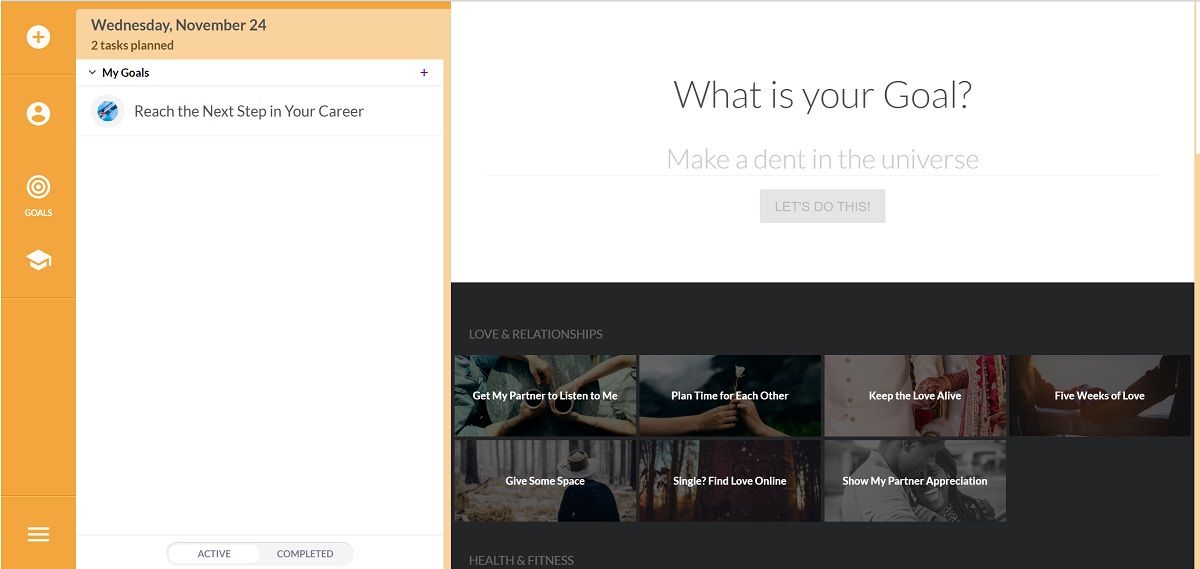Personal development in the workplace requires time and commitment. It is necessary if you want to upskill, move up in your career, and build on knowledge.
It can be difficult to know where to start, and that is where having a personal development plan can really help. In this article, we'll show you how to make a development plan, what you should include in it, and how to keep it on track.
Why You Should Have a Personal Development Plan
You may already know what you want out of your job and what you need to do, but keeping it in your head can actually do you a disservice. When you create something physical and write your goals down, you're more likely to achieve it.
This is called the “generation effect”, and it means you have improved memory and retention for things you've generated yourself, rather than something you have thought of or read about. It happens because it allows your brain to process it with more detail, and it creates a lasting impression on you.
When you have a personal development plan that you can plan and go back to, you're basically telling yourself that you're serious about it. This leads to greater outcomes, and allows you to draw out a richer plan.
It is also something that you can bring to your one-on-one meetings with your manager, and make it part of the conversation. It shows proactivity and dedication, and may well produce tangible opportunities for you to take on.
Getting Started With a Plan
Writing your development plan down is useful in any format, but having a good structure goes a long way to making it successful. Your plan should at least include the following sections:
- What is your specific goal is?
- What resources do you need to achieve the goal?
- What practical steps you can take to achieve the goal.
It is important to structure it like this so that you can focus on the details and narrow them down. You can use this to design your own working document in Microsoft Word or Excel, or you can choose from the hundreds of tracker templates in Word and Excel and just edit the wording.
Alternatively, if you want an application to do the structuring for you, Remente is a fantastic personal development app that breaks everything down for you. It has a wide selection of goals you can choose from, ranging from fun and recreation, to career and education, and you can even create your own unique goals.
Remente will break those big goals down and provide daily or weekly tasks for you to complete. It also features a life assessment and mood tracker, where you can rate each area of your life and track how things are coming along.
When you create a free account, simply click the Plus sign on the left-side toolbar, and select what you would like to do from the dropdown. It is incredibly user-friendly and has a premium version where you can access additional goal plans, resources, statistics on your progress, and much more.
Assessing Your Values and Setting Goals
Now that you have a foundation for writing your development plan, you will need to decide what you want to work on, personally. It can be tough to decide what is most important to you, but there is a simple way to do this.
Values-based reflection is where you look to pinpoint what your core values are, and reflect on whether these are being met by your current skill level and your job role. For example, if one of your values is innovation, you might look at whether you have had many opportunities to use it at work, or you might want to do more of this.
You can identify as many values as you like, but three or four is plenty. Once you have your values, you can start going into depth about what your motivations are, what they look like in practical terms, and create realistic goals.
Utilizing SMART goals is a helpful way to contextualize your goals and reach your potential. SMART stands for:
- Specific: Be specific about what you want to do.
- Measurable: To keep track and measure your progress.
- Attainable: Something that is in reach and achievable.
- Realistic: It is something you can work on with the resources you have.
- Time: A deadline or time-frame you will complete the goal in.
For each area of development you wish to pursue, you should write out a SMART goal and break it down into smaller steps that become weekly or monthly tasks. For example, if you want to improve your skills and knowledge in data analysis, smaller steps might include completing a training course, and shadowing colleagues.
Making Your Plan Work
Your plan is a working document that you can go back to, track your progress, and add to at any time. It is something that's personal to you, and you should make time for it in your daily schedule for maximum effectiveness.
Each week, task yourself to address one of your goals, and make sure to record it on your calendar, so you have time to do it. Look for opportunities to apply your personal development, such as in meetings, projects, and other real-life situations at work.
You should also regularly review your personal development plan once a month or every two months, to check off goals you've completed and keep it relevant. This will keep you disciplined and focused on your original intentions.
Personal Development in Progress
Wanting change and taking action are two separate things, and a personal development plan is a solid tool to make change happen. Whether you're aiming high, or just want to fine-tune a few things, having a plan organizes your thoughts into concrete solutions.
Investing in your personal development can have far-reaching results, and allows you to get the most out of your career. Have a go at creating one and see what you can achieve.




